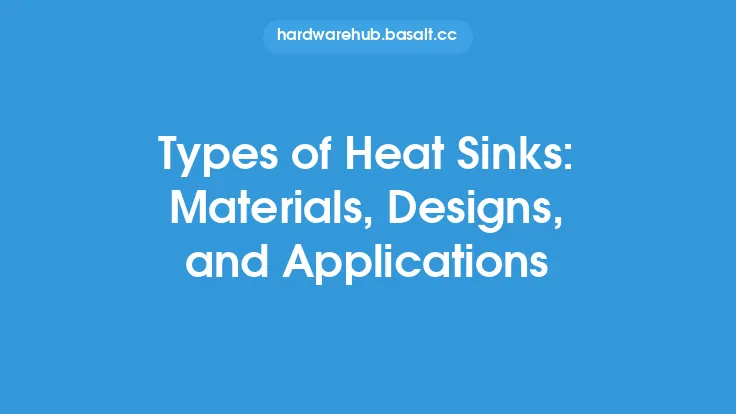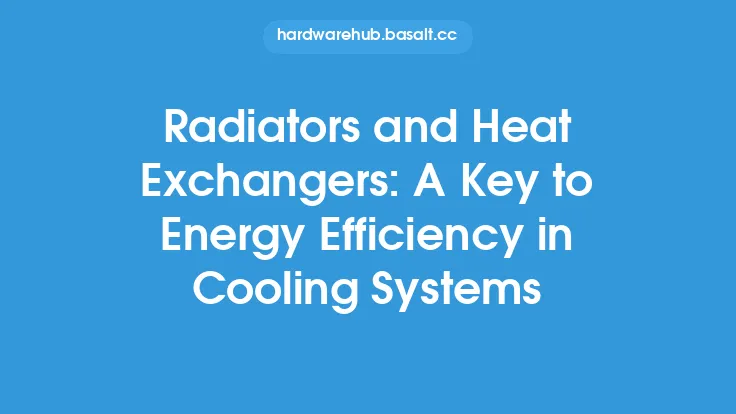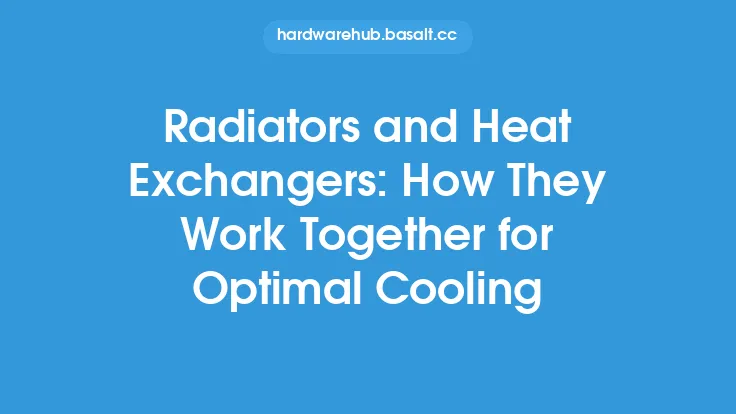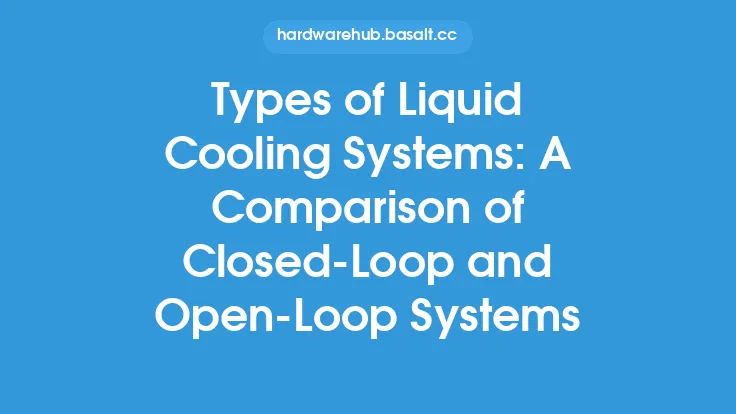Heat exchangers are crucial components in cooling systems, facilitating the transfer of heat from one fluid to another. They are designed to maximize the surface area in contact with the fluids, thereby enhancing the efficiency of heat transfer. Over the years, various types of heat exchangers have been developed, each with its unique design and application. This article delves into the comparison of plate, tube, and fin designs, exploring their characteristics, advantages, and limitations.
Introduction to Plate Heat Exchangers
Plate heat exchangers are one of the most common types, consisting of a series of thin, corrugated plates that are stacked together. The plates are typically made of stainless steel, titanium, or other corrosion-resistant materials. The corrugations on the plates increase the surface area, allowing for more efficient heat transfer. Plate heat exchangers are widely used in various applications, including HVAC systems, power plants, and chemical processing industries. They offer high heat transfer coefficients, compact design, and ease of maintenance. However, they can be prone to fouling and may require frequent cleaning to maintain their performance.
Tube Heat Exchangers: Design and Applications
Tube heat exchangers, also known as shell and tube heat exchangers, consist of a series of tubes enclosed in a shell. The tubes are typically made of copper, stainless steel, or other materials, and are arranged in a specific pattern to maximize heat transfer. The shell and tube design allows for a large surface area, making it suitable for high-heat transfer applications. Tube heat exchangers are commonly used in power plants, oil refineries, and chemical processing industries. They offer high heat transfer rates, durability, and resistance to corrosion. However, they can be bulky, expensive, and require significant maintenance.
Fin Heat Exchangers: Principles and Advantages
Fin heat exchangers, also known as fin-tube heat exchangers, consist of a series of tubes with fins attached to them. The fins increase the surface area, allowing for more efficient heat transfer. Fin heat exchangers are widely used in HVAC systems, refrigeration systems, and automotive applications. They offer high heat transfer coefficients, compact design, and low cost. However, they can be prone to fouling and may require frequent cleaning to maintain their performance. Fin heat exchangers are also sensitive to fluid velocities and temperatures, which can affect their performance.
Comparison of Plate, Tube, and Fin Heat Exchangers
A comparison of plate, tube, and fin heat exchangers reveals that each design has its unique advantages and limitations. Plate heat exchangers offer high heat transfer coefficients, compact design, and ease of maintenance, but can be prone to fouling. Tube heat exchangers offer high heat transfer rates, durability, and resistance to corrosion, but can be bulky and expensive. Fin heat exchangers offer high heat transfer coefficients, compact design, and low cost, but can be prone to fouling and sensitive to fluid velocities and temperatures. The choice of heat exchanger design depends on the specific application, fluid properties, and operating conditions.
Factors Affecting Heat Exchanger Performance
Several factors can affect the performance of heat exchangers, including fluid properties, operating conditions, and design parameters. Fluid properties, such as viscosity, density, and specific heat capacity, can significantly impact heat transfer rates. Operating conditions, such as temperature, pressure, and flow rate, can also affect heat exchanger performance. Design parameters, such as surface area, tube diameter, and fin spacing, can be optimized to enhance heat transfer rates. Understanding these factors is crucial for selecting the right heat exchanger design and optimizing its performance.
Maintenance and Cleaning of Heat Exchangers
Regular maintenance and cleaning are essential for maintaining the performance of heat exchangers. Fouling, corrosion, and scaling can significantly reduce heat transfer rates, leading to decreased system efficiency and increased energy costs. Cleaning methods, such as chemical cleaning, mechanical cleaning, and thermal cleaning, can be used to remove fouling and corrosion. Regular inspection and maintenance can help identify potential issues before they become major problems. Proper maintenance and cleaning can extend the lifespan of heat exchangers, reduce energy costs, and optimize system performance.
Conclusion
In conclusion, plate, tube, and fin heat exchangers are widely used in various applications, each with its unique design and advantages. Understanding the characteristics, advantages, and limitations of each design is crucial for selecting the right heat exchanger for a specific application. Factors such as fluid properties, operating conditions, and design parameters can significantly impact heat exchanger performance. Regular maintenance and cleaning are essential for maintaining the performance of heat exchangers and optimizing system efficiency. By selecting the right heat exchanger design and maintaining it properly, users can ensure efficient and reliable operation of their cooling systems.





